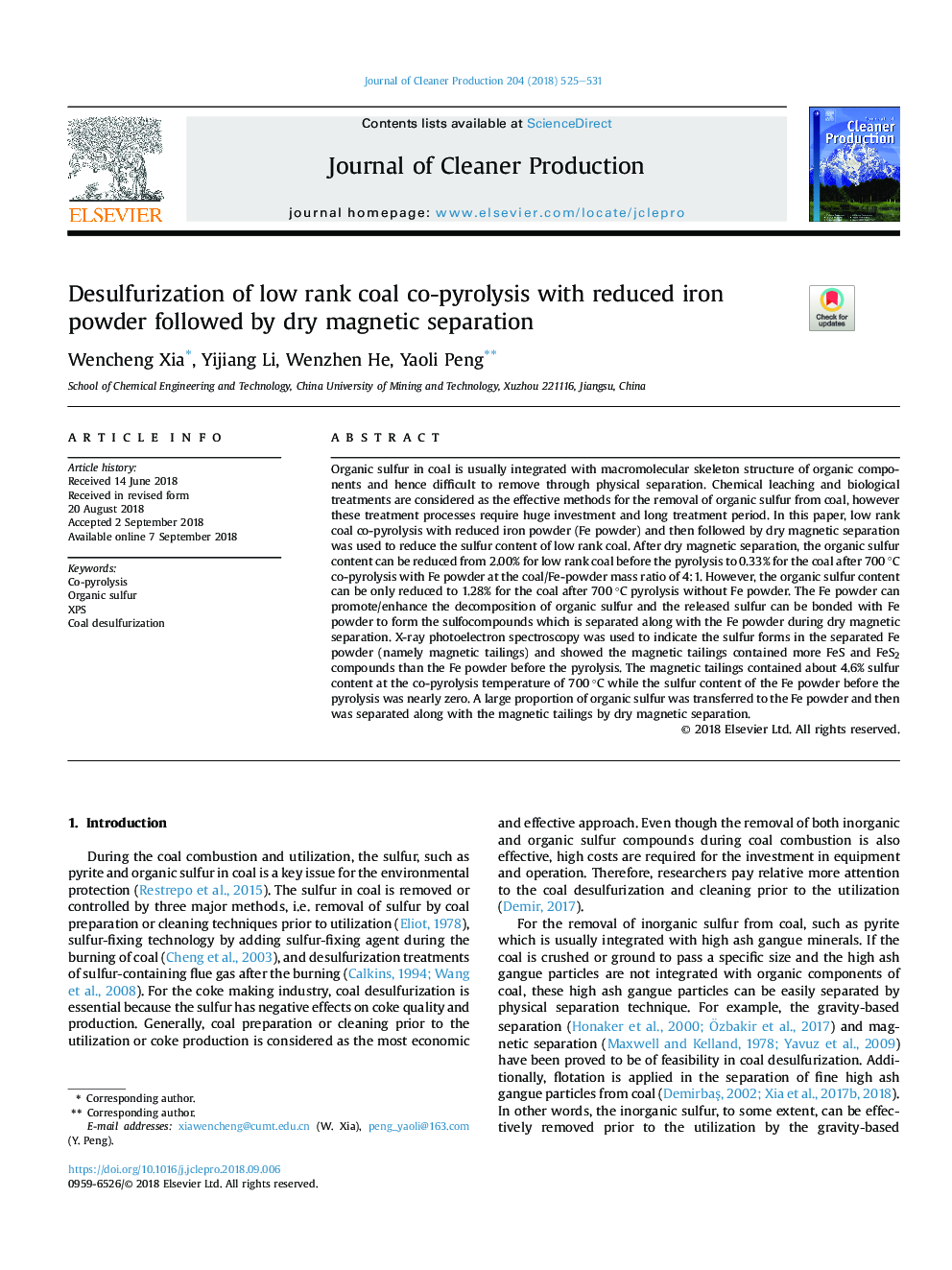| Article ID | Journal | Published Year | Pages | File Type |
|---|---|---|---|---|
| 10149223 | Journal of Cleaner Production | 2018 | 7 Pages |
Abstract
Organic sulfur in coal is usually integrated with macromolecular skeleton structure of organic components and hence difficult to remove through physical separation. Chemical leaching and biological treatments are considered as the effective methods for the removal of organic sulfur from coal, however these treatment processes require huge investment and long treatment period. In this paper, low rank coal co-pyrolysis with reduced iron powder (Fe powder) and then followed by dry magnetic separation was used to reduce the sulfur content of low rank coal. After dry magnetic separation, the organic sulfur content can be reduced from 2.00% for low rank coal before the pyrolysis to 0.33% for the coal after 700â¯Â°C co-pyrolysis with Fe powder at the coal/Fe-powder mass ratio of 4:1. However, the organic sulfur content can be only reduced to 1.28% for the coal after 700â¯Â°C pyrolysis without Fe powder. The Fe powder can promote/enhance the decomposition of organic sulfur and the released sulfur can be bonded with Fe powder to form the sulfocompounds which is separated along with the Fe powder during dry magnetic separation. X-ray photoelectron spectroscopy was used to indicate the sulfur forms in the separated Fe powder (namely magnetic tailings) and showed the magnetic tailings contained more FeS and FeS2 compounds than the Fe powder before the pyrolysis. The magnetic tailings contained about 4.6% sulfur content at the co-pyrolysis temperature of 700â¯Â°C while the sulfur content of the Fe powder before the pyrolysis was nearly zero. A large proportion of organic sulfur was transferred to the Fe powder and then was separated along with the magnetic tailings by dry magnetic separation.
Related Topics
Physical Sciences and Engineering
Energy
Renewable Energy, Sustainability and the Environment
Authors
Wencheng Xia, Yijiang Li, Wenzhen He, Yaoli Peng,
